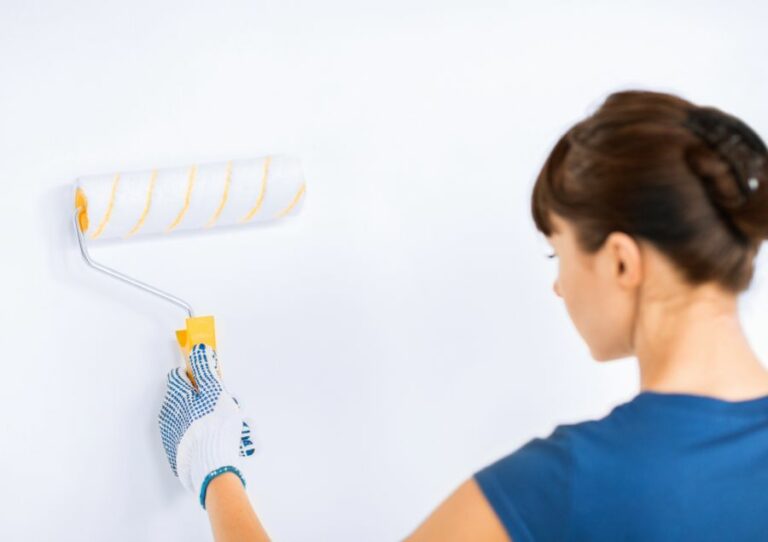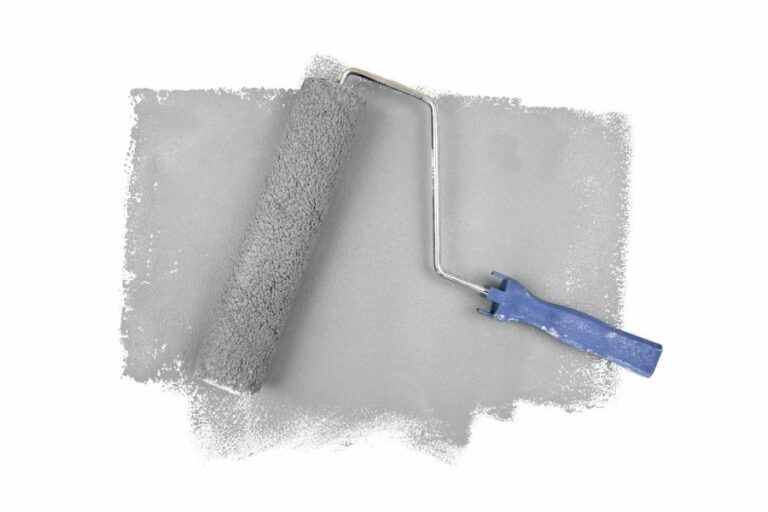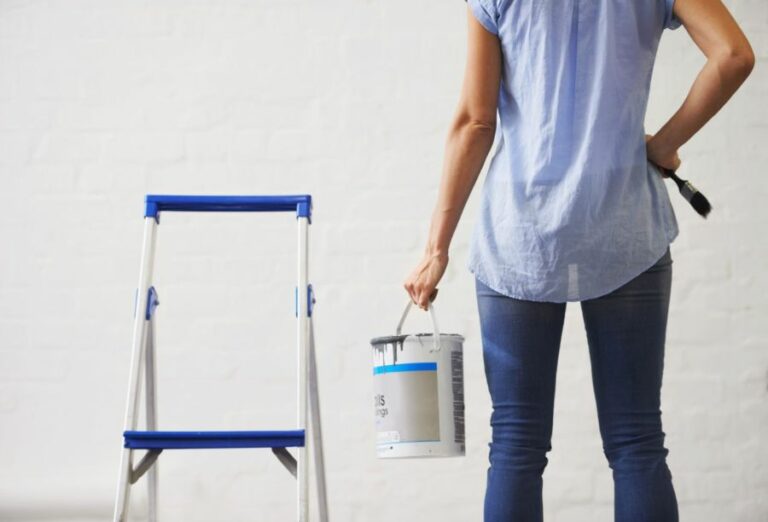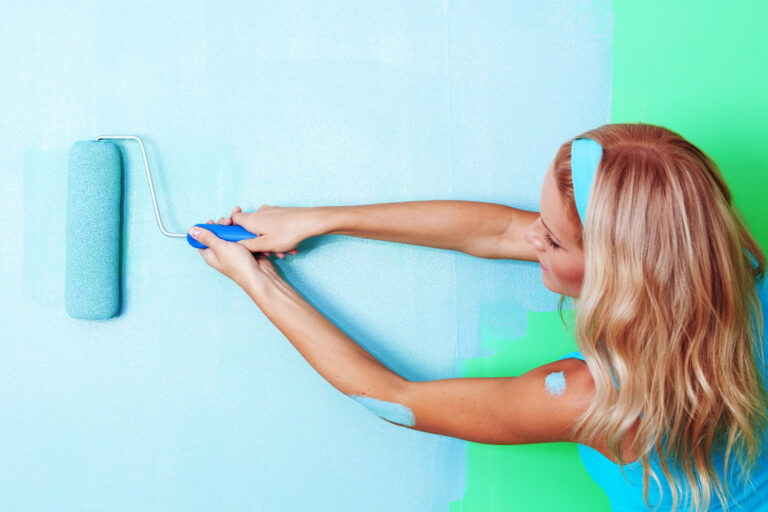Best Outdoor Cement Paint, 25 Things You Should Know
If you want to revamp your outdoor space, you’ve come to the right place. With years of experience in home improvement, we’re here to provide valuable insights on the best outdoor cement paint. Whether you want to enhance your patio, beautify your driveway, or add style and durability to your walkway, we’ve got you covered.
Best outdoor cement paint:
The best outdoor cement paint options include BEHR Premium Granite Grip, Rust-Oleum Decorative Concrete Coating, Sherwin-Williams H&C Concrete Stain, and KILZ L377711 Over Armor Textured Concrete Paint. These paints offer durability, resistance to wear, UV exposure, and weathering, ensuring long-lasting results and appealing finishes for outdoor concrete surfaces. Proper surface preparation and application techniques further enhance their performance.

Looking to give your outdoor cement surfaces a fresh, vibrant look? Discover the best outdoor cement paint options, learn expert tips for application, and unlock the secrets to long-lasting results. Read on and explore how to transform your space with just a brush and paint!
Contents
- 1 Top-Quality Exterior Cement Paint for Outdoor Surfaces
- 2 Which Type of Paint is Most Suitable for Outdoor Concrete Surfaces?
- 3 Is it Possible to Apply Paint on Outdoor Cement Surfaces?
- 4 What is the most effective waterproof paint for cement surfaces?
- 5 Is it a Good Idea to Paint Concrete Surfaces?
- 6 Is it necessary to apply primer on exterior concrete surfaces prior to painting?
Top-Quality Exterior Cement Paint for Outdoor Surfaces
• Introduction to Cement Paint
Cement paint is a high-quality, water-based paint specifically formulated for use on concrete and masonry surfaces. It is designed to be durable, long-lasting, and resistant to UV exposure, weathering, and wear, making it an excellent choice for outdoor applications.
Unlike other paints, cement paint penetrates the surface, providing a strong bond and a protective barrier against moisture, dirt, and other contaminants.
• Top Outdoor Cement Paint Brands
1. BEHR Premium Granite Grip
BEHR Premium Granite Grip is a durable and versatile cement paint suitable for various outdoor surfaces. It provides a slip-resistant finish that can endure harsh weather conditions, foot traffic, and general wear and tear.
Granite Grip is also formulated to resist dirt, grease, and household stains, ensuring your surface looks clean and fresh for an extended period.
2. Rust-Oleum Decorative Concrete Coating
Rust-Oleum Decorative Concrete Coating is a high-performance cement paint designed for outdoor use. It features a durable, wear-resistant finish that can withstand heavy foot traffic and weathering.
This coating is available in various colors, allowing you to achieve a customized, attractive look for your outdoor space.
3. Sherwin-Williams H&C Concrete Stain
Sherwin-Williams H&C Concrete Stain is another high-quality cement paint option for your outdoor surfaces. It provides a durable, protective finish that can withstand UV exposure, water damage, and other harsh outdoor conditions.
This stain is available in a wide range of colors and finishes, allowing you to create an attractive, personalized appearance for your concrete surfaces.
4. KILZ L377711 Over Armor Textured Concrete Paint
KILZ L377711 Over Armor Textured Concrete Paint provides a textured finish that is ideal for outdoor surfaces, including cement, wood, and composite materials.
It is designed to conceal cracks, splinters, and other imperfections while providing a durable, protective coating against moisture, weathering, and foot traffic.
• Factors to Consider When Selecting Outdoor Cement Paint
1. Surface Preparation
To achieve long-lasting results, it is crucial to properly prepare the surface before applying cement paint. This includes cleaning, repairing any cracks or damage, and using a suitable primer or sealer, as recommended by the paint manufacturer.
2. Paint Durability
Choose a cement paint with a proven track record of durability and resistance to wear, UV exposure, and weathering. A high-quality paint will ensure your outdoor surfaces maintain their appearance and functionality for years to come.
3. Coverage Area
Consider the coverage area of the paint you select, and compare this with the size of your project. The paint’s coverage will help you determine the quantity of paint needed to complete the task and ensure a consistent finish across the entire surface.
4. Finish and Appearance
Choose a cement paint that offers the desired finish and appearance for your outdoor surfaces, whether that be a textured, slip-resistant coating, a glossy sheen, or a natural, understated look.
• Tips and Tricks for Successful Outdoor Cement Paint Application
- Follow the manufacturer’s instructions on surface preparation, application, and curing time. These guidelines are crucial to achieving the best possible results with your cement paint.
- Use appropriate tools, such as rollers, brushes, and sprayers, to ensure even and consistent coverage. Be sure to clean your tools thoroughly after use to maintain their efficiency and longevity.
- Apply multiple, thin layers of paint instead of a single, thick coat. This approach will ensure the paint penetrates and bonds with the surface, providing optimal durability and protection.
- Allow ample time for the paint to dry and cure before exposing the surface to foot traffic or other elements. This waiting period will help prevent premature wear or damage to the newly applied paint.
In conclusion, selecting the best outdoor cement paint involves considering aspects such as durability, coverage, and appearance, as well as proper surface preparation and paint application techniques.
By following the recommendations and insights provided in this article, you can achieve a professional, long-lasting finish for your outdoor concrete surfaces.
Which Type of Paint is Most Suitable for Outdoor Concrete Surfaces?
When it comes to painting outdoor concrete surfaces, choosing the right paint is crucial for achieving long-lasting and attractive results.
• Key Factors to Consider
Before we dive into specific recommendations, it is essential to understand the critical factors to consider when choosing paint for outdoor concrete surfaces.
– Durability and Weather Resistance
Since outdoor concrete is exposed to various weather conditions (sun, rain, wind, and temperature fluctuations), it is crucial to choose a paint that can withstand these elements without cracking, peeling, or fading.
– Breathability
Concrete is a porous material that naturally absorbs and releases moisture. It is essential to choose a paint that allows this natural process to take place without trapping moisture inside the surface, which can lead to issues such as mold growth or surface deterioration.
– Adhesion
Good adhesion is essential for any paint coating, but it is especially important when dealing with concrete surfaces, which are often rough and porous. It is vital to select a paint that can penetrate the pores and properly adhere to the concrete for a long-lasting and durable finish.
– Color Retention
Many outdoor paints can fade over time due to exposure to sunlight and harsh weather conditions. Make sure to choose a paint that will continue to look fresh and vibrant for years to come.
• Types of Paint for Outdoor Concrete
There are several types of paint suitable for outdoor concrete surfaces, each with its advantages and disadvantages. Here are my top recommendations based on my experience in the field.
– Acrylic Latex Paint
Acrylic latex paint is a water-based paint that provides excellent durability, adhesion, and color retention. It is easy to work with, dries quickly, and can be easily cleaned up with soap and water. Acrylic latex paint is typically one of the best choices for most outdoor concrete projects.
Recommended: If you are looking for a versatile and user-friendly paint option that provides long-lasting results, acrylic latex paint is an excellent choice.
– Elastomeric Paint
Elastomeric paints are a type of acrylic latex paint that has been formulated with added elasticity. These paints can expand and contract with the surface, making them ideal for surfaces prone to movement or cracking, such as driveways and sidewalks.
Recommended: If you have an outdoor concrete surface that experiences frequent changes in temperature or is prone to cracking, elastomeric paint is an excellent option to consider.
– Epoxy Paint
Epoxy paint is a two-component, solvent-based paint that creates a hard, durable, and chemical-resistant finish. It is ideal for surfaces that require a heavy-duty coating, such as garage floors and industrial settings.
However, epoxy paint is typically more challenging to work with and requires proper surface preparation and application.
Recommended: If you need heavy-duty, chemical-resistant paint for surfaces like garage floors, epoxy paint is an excellent choice. However, keep in mind the added challenges with surface preparation and application.
– Concrete Stain
Concrete stains penetrate the surface and react with the concrete’s natural chemistry to create a unique, patterned, and colorful finish.
Although they do not provide the same level of protection as other paint types, they offer an attractive and natural-looking appearance that can enhance the beauty of outdoor concrete surfaces.
Recommended: If you are looking to achieve a more decorative and natural appearance on your outdoor concrete surface, concrete stain is a great option. However, keep in mind its lower protective properties compared to other paint types.
• Conclusion
In conclusion, the best paint for outdoor concrete surfaces will depend on your specific project, the condition of your concrete, and your desired result.
Acrylic latex paint and elastomeric paint are generally recommended as they provide excellent durability, weather resistance, adhesion, and color retention, but epoxy paint and concrete stains have their specialized applications as well.
Remember that thorough surface preparation, proper application, and regular maintenance will also play a significant role in ensuring the longevity and success of your painted outdoor concrete surface.
Type of Paint | Description | Pros | Cons |
|---|---|---|---|
Masonry Paint | Water-based paint specifically designed for concrete surfaces. | Durable, long-lasting, resistant to moisture and mildew, easy to apply and clean up. | May not be suitable for high-traffic areas or surfaces exposed to extreme weather conditions. |
Acrylic Latex Paint | Water-based paint that adheres well to concrete surfaces, providing a strong and flexible finish. | Easy to apply, quick-drying, available in various colors and finishes, less odor compared to oil-based paints. | May not be as durable as masonry or epoxy paints, may require a sealer or primer for best results. |
Epoxy Paint | Two-part paint system that creates a hard and durable finish on concrete surfaces. | Highly durable, resistant to chemicals and abrasion, ideal for high-traffic areas and garage floors. | More difficult to apply, requires thorough surface preparation, may yellow over time when exposed to sunlight. |
Concrete Stain | Water or acid-based solution that reacts with the concrete surface to create a permanent color. | Provides a natural, variegated finish, UV-resistant, low maintenance, available in various colors and patterns. | May require a sealer for best results, not as durable as epoxy or masonry paints, less color options compared to paints. |
Is it Possible to Apply Paint on Outdoor Cement Surfaces?
Painting outdoor cement can be an excellent way to improve the appearance of your property, protect the surface from the elements, and create a space that complements your overall landscape design.
• Choosing the Right Paint for Outdoor Cement
The first step in painting outdoor cement is selecting the appropriate paint for your project. There are several types of paint available for outdoor cement surfaces, including:
– Masonry Paint
Masonry paint is a specially-formulated latex paint that is designed for use on cement and other masonry materials. It is water-resistant and durable, making it an ideal choice for outdoor cement surfaces.
Some masonry paints also contain fungicides or other additives that help protect surfaces from mold and algae growth.
– Acrylic Latex Paint
Acrylic latex paint is a resilient and versatile paint option that works well on cement surfaces. It offers excellent adhesion, durability, and resistance to weathering, making it suitable for outdoor applications.
Be sure to choose a paint specifically formulated for exterior use, as this will provide added protection against fading, cracking, and peeling.
– Concrete Stain
Concrete stain is not a traditional paint but rather a semi-transparent coloring agent that penetrates the surface of the cement. This allows the stain to adhere more effectively and creates a natural, weathered appearance.
There are both water-based and acid-based stains available, each offering different levels of opacity and finish.
• Preparing Your Cement Surface for Painting
Before applying paint to your outdoor cement surface, it’s essential to prepare the surface properly. This will ensure the paint adheres well and provides long-lasting protection.
– Cleaning the Surface
Start by cleaning the surface thoroughly to remove any dirt, debris, and stains. Use a pressure washer or a garden hose with a spray nozzle to rinse the cement. For stubborn stains or areas with mold, mildew, or algae, use a stiff brush and a solution of water and mild detergent or trisodium phosphate (TSP).
Allow the surface to dry completely before proceeding.
– Repairing Damaged Areas
Inspect your cement surface for any cracks, chips, or other damage. Small cracks or chips can be repaired using a pre-mixed concrete patch material, while larger cracks may require a cement repair product. Follow the manufacturer’s instructions for proper application and curing times.
– Etching the Surface
Etching is an essential step for some paint types, particularly concrete stains or paints that require a porous surface for proper adhesion. Use a commercial etching solution or a solution of muriatic acid and water to etch the surface.
Be sure to follow the recommended safety precautions, as these chemicals can be hazardous.
• Applying Paint to Outdoor Cement
Once your surface is prepared, you’re ready to apply your chosen paint or stain. Be sure to read the manufacturer’s guidelines for the specific product you have selected, as this will give you the best insight into application techniques, coverage rates, and drying times.
– Priming the Surface
Priming is often recommended, especially when working with masonry or acrylic latex paint. Use masonry or concrete primer to ensure even coverage and proper bonding between the paint and cement.
Apply the primer according to the manufacturer’s instructions and allow it to dry fully before applying the topcoat.
– Painting the Surface
Using a paint roller or brush, apply your chosen paint or stain in thin, even coats, following the manufacturer’s recommendations for coverage rates and drying times. It’s generally best to apply at least two coats for adequate protection and coverage.
Be sure to allow each coat to dry fully before applying the next.
– Finishing Tips
Add a finishing touch to your painted outdoor cement surface with a concrete sealer. This helps protect the paint from water, dirt, and stains, ensuring your surface lasts longer and maintains its appearance over time.
A non-slip additive can also be useful in outdoor areas that may become slippery when wet, such as walkways or patios.
• Conclusion
Painting outdoor cement is a straightforward process when you select the right paint or stain, properly prepare the surface, and follow the appropriate application techniques.
By taking the time to complete each step thoughtfully and with care, you can transform your outdoor cement surfaces into attractive and durable elements that enhance your property’s curb appeal and outdoor living potential.
| Question | Can you paint outdoor cement? |
|---|---|
| Answer | Yes, you can paint outdoor cement using an appropriate type of paint, such as masonry or concrete paint. It’s important to clean and prepare the surface properly before painting, and to choose the correct type of paint for the specific cement surface and environmental conditions. |
What is the most effective waterproof paint for cement surfaces?
Waterproof paint is essential when it comes to protecting cement surfaces from water damage, mold, and deterioration. Choosing the right waterproof paint for your cement project is crucial to achieving the desired results and long-lasting protection.
• Understanding Waterproof Paint for Cement
Waterproof paint for cement is a specially formulated coating designed to provide a durable barrier against water penetration, thus preventing damage to the substrate.
These paints are typically composed of a blend of acrylic or elastomeric resins, along with various additives to improve adhesion, durability, and water resistance. Some waterproof paints also include mildewcides and fungicides to prevent the growth of mold and mildew.
– Benefits of Waterproofing Cement Surfaces
- Protection from Water Damage: Waterproof paint effectively seals off the porous surface of cement, preventing water absorption and subsequent damage. This is especially important for structures exposed to heavy rainfall, flooding, and moisture.
- Enhanced Durability: By protecting the cement from water intrusion, waterproof paint helps extend the life of the structure, reducing the need for frequent repairs or replacements.
- Mold and Mildew Resistance: The presence of mold and mildew can cause respiratory problems and negatively impact the structural integrity of your cement surface. Waterproof paint can help prevent their growth.
- Improved Aesthetics: Waterproof paint is available in a variety of colors and finishes, making it easy to enhance the appearance of your cement surface.
- Increased Property Value: Waterproofing your cement surfaces can boost your property value by ensuring its structural integrity and visual appeal.
• Types of Waterproof Paint for Cement
There are three main types of waterproof paint suitable for cement surfaces:
- Elastomeric Paint: Also known as masonry paint, elastomeric paints are highly flexible and durable coatings that can expand and contract, accommodating substrate movement. This attribute makes elastomeric paint ideal for exterior cement surfaces exposed to various weather conditions.
- Acrylic Paint: Acrylic paints are water-based and provide excellent adhesion to cement surfaces. These paints are generally easy to work with, quick-drying, and come in a wide selection of colors and finishes. Acrylic paint is a suitable choice for both interior and exterior cement surfaces.
- Concrete Stain: While technically not a paint, concrete stains penetrate the porous surface of the cement, providing a durable and long-lasting color tint. This type of finish generally offers better resistance to wear and tear than paint, making it a popular option for high-traffic areas.
– How to Choose the Right Waterproof Paint for Your Cement Project
When selecting waterproof paint for your cement surface, consider the following factors:
- Intended Use: Consider the specific requirements of your project, such as whether it is an indoor or outdoor application, the location’s climate, and the level of moisture exposure.
- Surface Preparation: The condition of your cement surface will determine the type of waterproof paint that is appropriate. For instance, if your cement has existing paint or coatings, elastomeric paint may be a better choice due to its excellent adhesion properties.
- Application Method: The ease of application can vary between different waterproof paint types. For example, acrylic paints can typically be applied using a brush, roller, or sprayer, while elastomeric paints may require special equipment.
- Color and Finish Options: Depending on your aesthetic preferences, you may want to choose a waterproof paint that offers a wide variety of colors and finishes.
• Best Practices for Applying Waterproof Paint on Cement Surfaces
To get the most out of your waterproof paint, follow these tips for proper application:
- Surface Preparation: Clean the cement surface thoroughly to remove dirt, dust, and any loose material. Repair any cracks or surface defects before applying the waterproof paint.
- Primer Application: Applying a suitable primer can improve adhesion, coverage, and the overall performance of the waterproof paint. Follow the manufacturer’s guidelines for primer selection and application.
- Paint Application: Apply the waterproof paint using the recommended method, such as a brush, roller, or sprayer, and in the recommended number of coats. Always follow the manufacturer’s instructions for curing time between coats and for the final drying time.
- Regular Maintenance: Periodically inspect the waterproof paint for any signs of wear, cracking, or peeling, and touch up as needed to maintain the protective qualities of the coating.
• Final Thoughts
A well-selected and properly applied waterproof paint can provide excellent protection and enhanced aesthetics for your cement surfaces.
When it comes to choosing the best waterproof paint for your cement project, carefully consider the specific requirements and conditions of your application to ensure optimal performance and longevity.
Is it a Good Idea to Paint Concrete Surfaces?
Painting concrete surfaces not only improves their appearance but also provides protection against various elements. However, one must understand the advantages and disadvantages of painting concrete to determine if it’s the right choice for a specific project.
• Advantages of Painting Concrete
– Aesthetics
One of the primary reasons homeowners and business owners choose to paint concrete is to improve its appearance. Concrete tends to have a cold, industrial look, which may not be suitable for all settings.
Painting the surface allows you to customize your space and make it more inviting with the color of your choice.
– Protection
Painting your concrete surface can provide an added layer of protection against water infiltration and damage, as well as against the growth of mildew, mold, and other harmful substances. This is particularly important for outdoor concrete surfaces that are exposed to harsh weather conditions.
– Easy Maintenance
A painted concrete surface becomes easier to clean and maintain. For instance, spills and stains can easily be wiped off. Furthermore, a properly painted surface will repel dust and dirt, making it more manageable to keep clean.
– Increased Lifespan
Concrete on its own is a durable material, but the sealant in the paint will extend its lifespan even more. With proper care and maintenance, a painted concrete surface can last for many years without showing significant signs of wear.
• Disadvantages of Painting Concrete
– Time and Effort
Painting concrete requires a considerable amount of time and effort. The surface must be appropriately prepped, which involves cleaning, removing any loose particles, and possibly repairing any cracks or holes.
Additionally, the paint must be applied in several coats, with ample drying time between each layer.
– Incompatibility with Moisture
Concrete naturally absorbs moisture from the ground or its surrounding environment. When the moisture tries to escape from the surface, it can cause the paint to blister, peel, or crack.
To address this issue, it’s essential to use breathable paint specifically designed for concrete or to apply a moisture barrier before painting.
– Cost
Although painting concrete is typically more affordable than other types of flooring solutions, the cost can still add up. You may need to factor in the cost of paint, primers, sealants, and any repair materials required for a successful application.
– Removal Difficulty
If you ever decide to remove the paint from your concrete surface, it can be a difficult and labor-intensive process. Paint removal often involves using a paint stripper or a mechanical method like sandblasting, which can be expensive and time-consuming.
• Tips for Successful Concrete Painting
To ensure a successful concrete painting project, consider the following tips:
– Choose the Right Paint
Not all paints are suitable for concrete. It’s essential to select a paint specifically designed for concrete or masonry surfaces, which will adhere better and resist moisture. Latex-based paint is usually recommended for its durability and breathability.
The U.S. Department of Energy also recommends using insulating concrete forms (ICFs) due to their energy efficiency, which can further increase the performance of the painted surface.
– Proper Surface Preparation
Proper surface preparation is crucial for a successful paint job. Clean the surface thoroughly using a pressure washer or a detergent solution to remove any dirt, grease, or other contaminants. Then, repair any cracks or holes using a suitable concrete repair product.
– Apply a Primer
Using a primer specifically designed for concrete surfaces after cleaning and repairs will improve the paint’s adhesion and ensure a longer-lasting finish. It also helps to prevent paint from bleeding due to concrete moisture.
– Allow Sufficient Drying Time
It’s essential to allow enough drying time between each layer of paint application. Rushing the process can result in a subpar finish and potential peeling or cracking down the line.
In conclusion, painting concrete can be a good idea when done correctly. Consider the pros and cons before committing to this project, and take the necessary steps to ensure a successful, long-lasting paint job. With appropriate care, your painted concrete surface will serve you well for many years to come.
Is it necessary to apply primer on exterior concrete surfaces prior to painting?
Priming exterior concrete before applying paint is essential to ensure the durability and longevity of the paint job. Priming not only helps the paint adhere better but also serves as a protective barrier against moisture, mildew, and other external factors.
By neglecting this crucial step, the concrete surface could eventually start peeling or cracking, leading to a costly new paint job.
• Benefits of Priming Concrete Surfaces
– Enhanced Adhesion
Concrete is porous, and although it may appear smooth and solid, it typically contains numerous tiny pores and voids. Priming the surface fills these pores, serving as a bridge between the concrete substrate and the paint, ensuring better adhesion and preventing peeling or flaking.
– Improved Durability
The use of a primer on exterior concrete surfaces helps create a more durable and long-lasting finish, protecting the paint from various environmental factors such as moisture, UV radiation, and temperature changes.
– Uniform Paint Finish
Priming the surface helps the paint evenly cover the entire surface, preventing blotchiness and rough patches. It eliminates the need for multiple coats of paint, ultimately saving time and money.
– Mold and Mildew Resistance
Primers formulated for exterior concrete surfaces typically contain mold and mildew inhibitors, reducing the risk of mold and mildew growth on the painted surface. This not only protects the structure’s aesthetics but also its structural integrity.
• Choosing the Right Primer for Exterior Concrete
It is essential to select the right primer for exterior concrete surfaces, as not all primers are created equal. Here are a few factors you should consider while choosing a suitable primer:
– Acrylic or Epoxy?
There are two types of primers commonly used for exterior concrete surfaces: acrylic and epoxy. Acrylic primers are water-based, easy to clean up, and provide excellent adhesion on concrete surfaces. They also allow moisture to escape from the substrate, preventing paint bubbles and blisters.
Epoxy primers, on the other hand, are known for their excellent surface penetration and adhesion. They provide a durable and impermeable layer, making them an ideal choice for exterior concrete surfaces exposed to high levels of moisture or harsh chemicals.
In most cases, I recommend using an acrylic primer for ease of application and cleaning. However, epoxy primers might be a better option for surfaces exposed to heavy wear and tear.
– Alkali-Resistant Primer
Exterior concrete surfaces, especially new ones, can have a high pH level due to the presence of alkalis. Using an alkali-resistant primer is crucial, as it resists the alkalinity of concrete and prevents paint failure.
The Portland Cement Association states that new concrete should cure for at least 28 days before applying paint or primer to achieve maximum durability and ensure proper adhesion. Check the product label and opt for primers specifically designed for high pH or alkaline surfaces.
• Proper Application of Concrete Primer
– Surface Preparation
To achieve the best results, thoroughly clean the concrete surface before priming. Remove all dirt, oil, grease, dust, and any loose or peeling paint using a pressure washer or a wire brush.
For best results, treat the surface with a concrete cleaner and etcher to remove stubborn stains and ensure proper adhesion.
– Applying the Primer
Follow the manufacturer’s instructions for the appropriate primer application method, which may include rolling, brushing, or spraying.
Apply a consistent, even coat across the entire surface, paying special attention to areas with cracks or rough patches. Allow the primer to dry as recommended, usually for a minimum of 24 hours.
– Painting the Surface
After the primer has completely dried, proceed with applying the paint. Choose an exterior-grade paint specifically designed for concrete surfaces, which will provide optimum durability and protection. Apply at least two coats, allowing for proper drying between each coat.
In conclusion, priming exterior concrete surfaces is an essential step for any painting project. It ensures better paint adhesion, improved durability, and a uniformly coated surface.
By following the proper surface preparation, primer selection, and application guidelines, you’ll achieve a long-lasting and visually appealing paint job on your concrete surface.







